OK, I could manage to flash the bios file. The X79-WS machine starts up and I can enter bios setup.
But now the entire Advanced options tab is blank and navigating there results in bios setup hang.
@paranoid_android -What the!!! Sorry about this, maybe it’s my fail again! Not sure how that could happen, but I will redo the mod now.
Was the “E” board new BIOS OK?
*Edit - @paranoid_android - here is redo on the Non-E BIOS, maybe it is your USB, unsure, I didn’t see anything off when I checked the file, but redid from scratch anyway
http://s000.tinyupload.com/index.php?fil…644127687383050
*Edit 2 - I think maybe I see the issue, try this one instead, sorry about that, I think maybe it was my fault (using AMIBCP to enable PCI Submenu instead of via IFR)
If this works now, and you haven’t flashed the “E” board, I probably need to make this same change on that one I sent too, let me know if you’ve not tried it yet and if not and this one works, I’ll do that one this way too
http://s000.tinyupload.com/index.php?fil…609953940297640
And here’s the other E board one too, in case I did it wrong way before as well (unsure which I sent last, too many copies here now) 
http://s000.tinyupload.com/index.php?fil…682073717768734
Hi @Lost_N_BIOS , I had flashed the E-Board with the file that @JackSted had fixed.
It seems to work fine, the tabs in Bios are accessible and the bitfurcation setting I applied are visible in HWInfo.
Yet, I lack the proper HW to test if the Portsplit really works: No bitfurcation card like the asus hyper m.2 and no second M.2 drive yet.
But the device which sits in the spilt port is a PCIe×4 USB Card (Also with PLX onboard), and that one works as fine as before - have currently 3 drives connected to it and already had various data transfers between them.
So I did not use the Bios File for the E-Board that was in your package along with the Non-E Bios.
I will try out your latest provided file for the non-E-Board and see what happens.
If I run into flash hassle again I will take the time to look for another usb stick that fits the purpose first.
I suspect the currently used stick, which is quite old, might be starting to die slowly.
Whatever the outcome is, I have to thank you and JackSted a lot for your work and time, as I am currently only in the position to take and not contribute knowledge myself ![]()
If USB works for one board it should work for the other, so it’s probably the changes I made, some mistake during all this double board editing at same time 
Did @JackSted enable that other PCI Sub menu for you too on the E board? If not, it’s enabled in the BIOS I posted, but of course need to make sure it’s proper at advanced tab/IOH first before the other submenu matters 
You’re welcome, and don’t worry, it will all eventually be sorted out and proper 
R.IP. Usb stick ![]()
Glad to have been of help, was no effort Lost_N_BIOS did all the work, just used my recent knowlege on my own project to do a 1 minute fix.
@Lost_N_BIOS , can you get something out of the screenshots in Post #70?
Or do you mean a diffenrent PCI Submenu? There are also menus about PCI2.0 Settings (=chipset?) present.
EDIT: Here are some additional images.
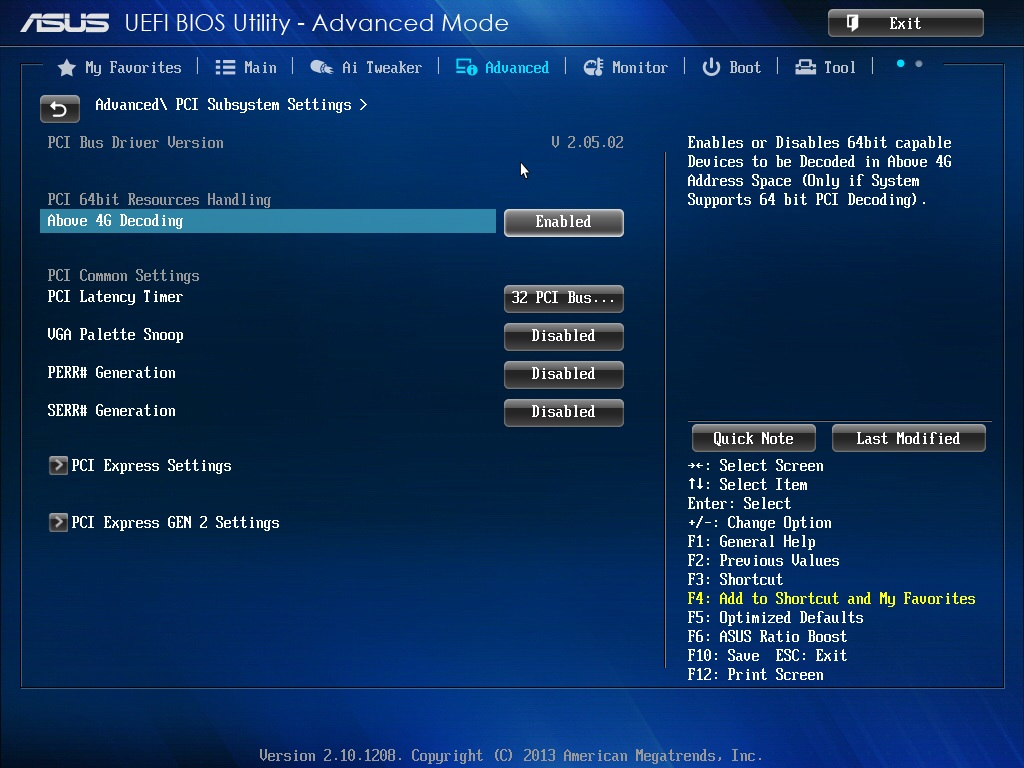
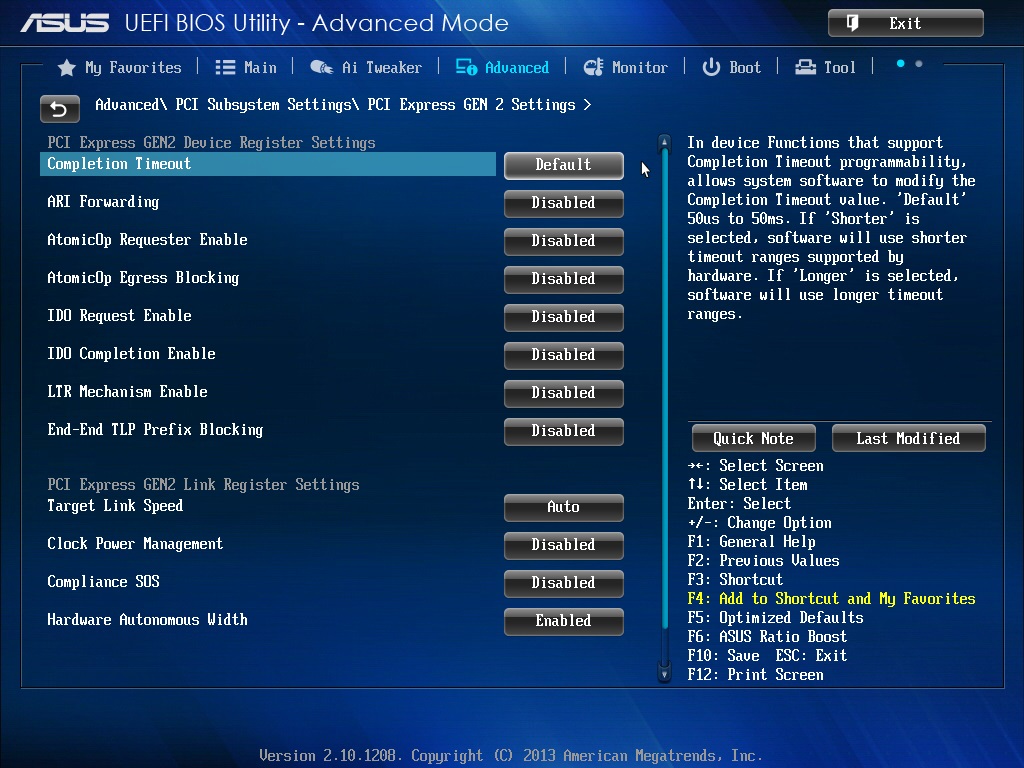
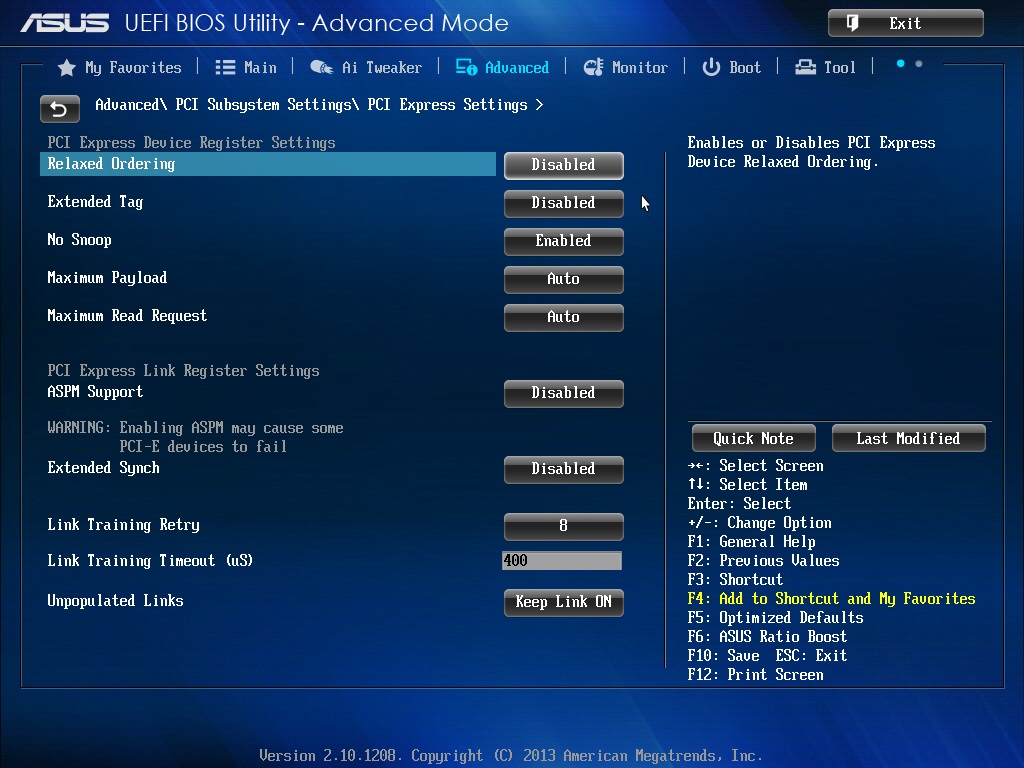
Everything is in order with the E-WS BIOS just checked, both PCI Submenu and ystem Agent Configuration menus are un-hidden with 46 -> 47 by @Lost_N_BIOS I only switched which System Agent Configuration was shown with AMIBCP.
@paranoid_android - those images in post #86, that is the other submenu in advanced that I was referring to enabling (PCI submenu), what are you asking about them, I’m unsure what you mean?
Also, unclear what you mean about post #70 images?
@Lost_N_BIOS - I was referring to post #84 where you asked if the other submenu was activated. I was’t sure what sub menu you ment so I posted the pics.
I gotcha, yes that was the one I was asking about.
@paranoid_android By the way, have you tested that Dual M.2 NVMe Ports PCIe 3.0 x16 Card in the directly connected x8 slot without bifurcation enabled if so the problem would be incompatibility of the ASM2824 chip with the onboard PLX.
If writing to NVME still doesnt work I suspect an IRQ conflict (may not report a conflict stil causes BSOD).
Meanwhile the exact BSOD code and just before crash generated event viewer errors may provide insight into the cause.
EDIT @paranoid_android :
You could also enable Above 4g Decoding, this often fixes things in the case that the issue is simply having too many devices (might even fix your USB problem).
@JackSted : I have been asking myself a long time what that Above 4G decoding setting might be useful for.
I had tested the Dual M.2 Controller in the directly connected ×8 Slot.
So it could really be an incopatibility problem with the plx or an irq issue.
All PCIe Slots share the same IRQ, along with the onboard Marvell9230 Controller and one Intel210 Lan Chip.
The System hang did not even result in a BSOD, just a instant and complete freeze.
Only once I saw a BSOD appearing, but it dissappeared quite soon; though I had set the option that the system should not restart in case of a BSOD.
So its very mysterious in this case.
You could try removing /disabling everything else in bios like onboard sound unused ahci controllers firewire etc. And then see if that fixes it with and without Above 4G decoding. Then if writing to NVME card works you can enable one by one folowed by reboots and if it crashes you know wich device conflicts.
If all else fails maybe return/exchange for a non PLX one /sell the card or use it on a newer mobo.
Maybe it would be helpful to disable the Marvell controller and LAN controller for testing, to see if it’s a limited resource/IRQ issue.
@Lost_N_BIOS - I applied your latest bios file for the non-E WS board, and this time it seems OK.
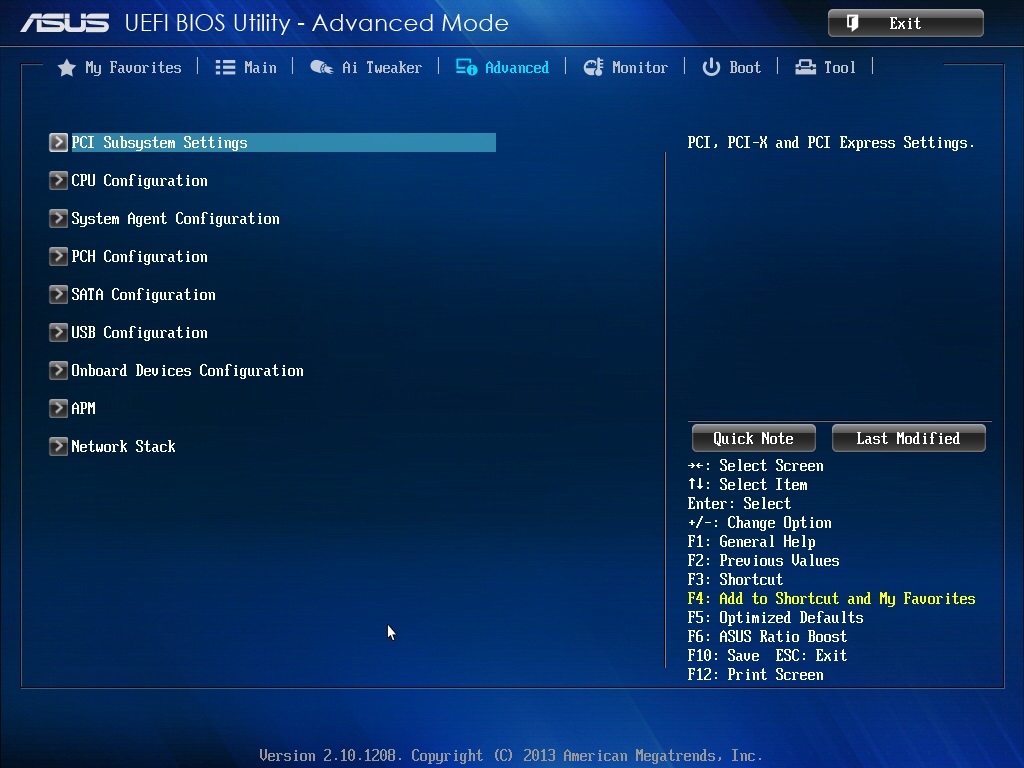
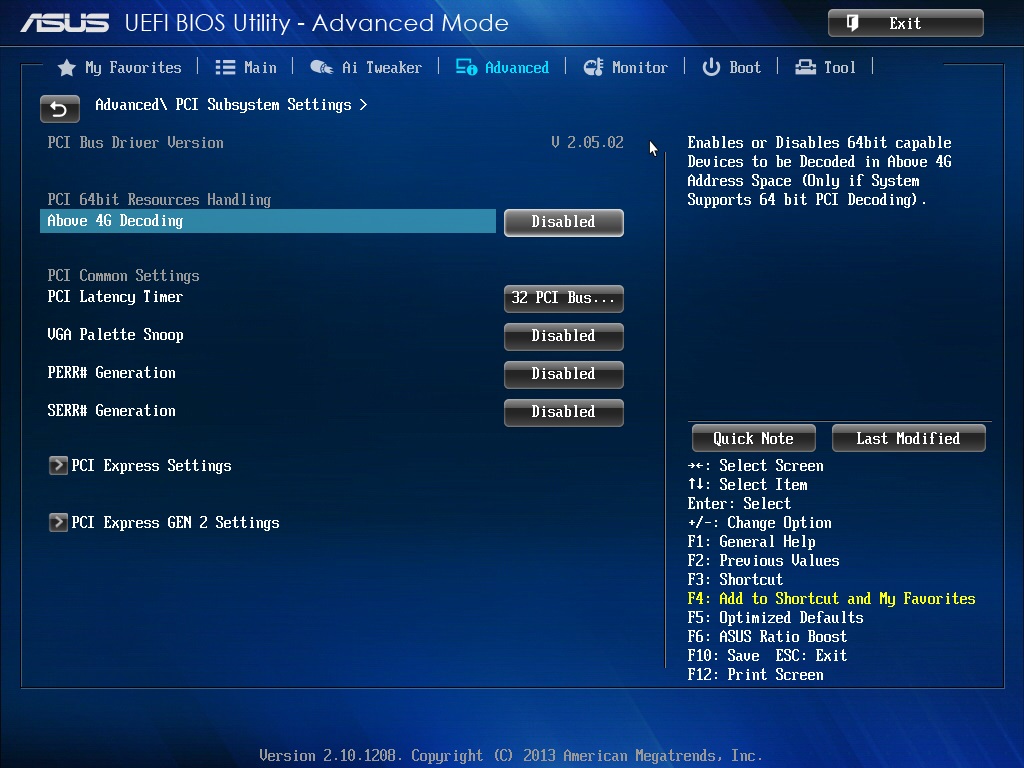
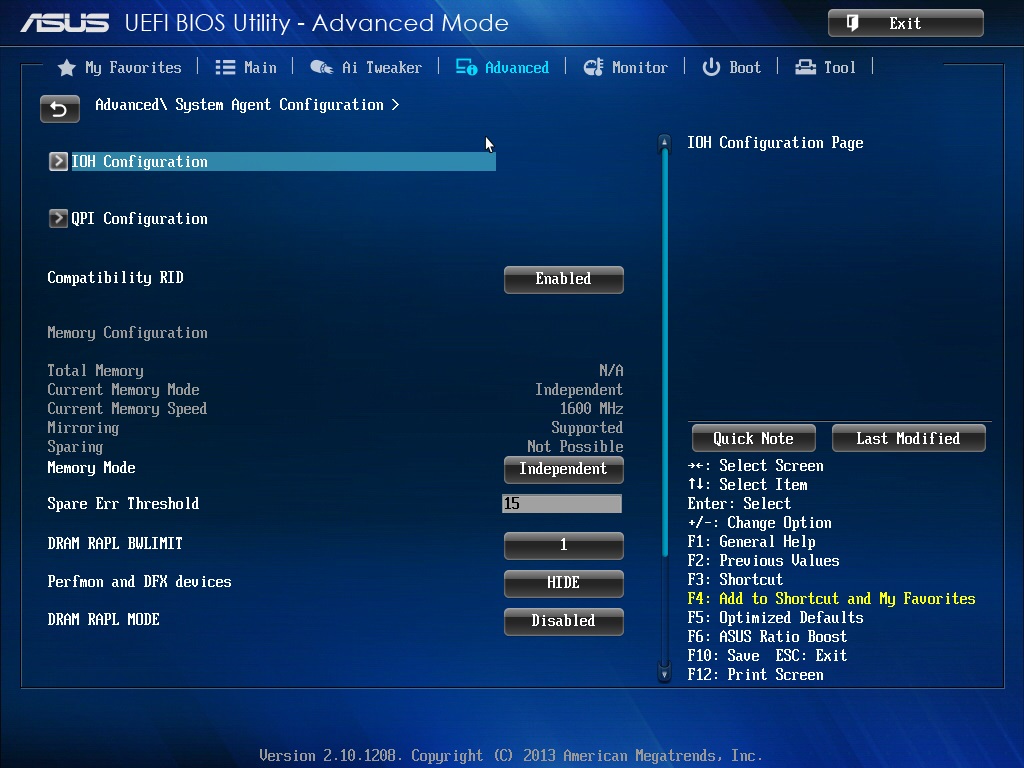
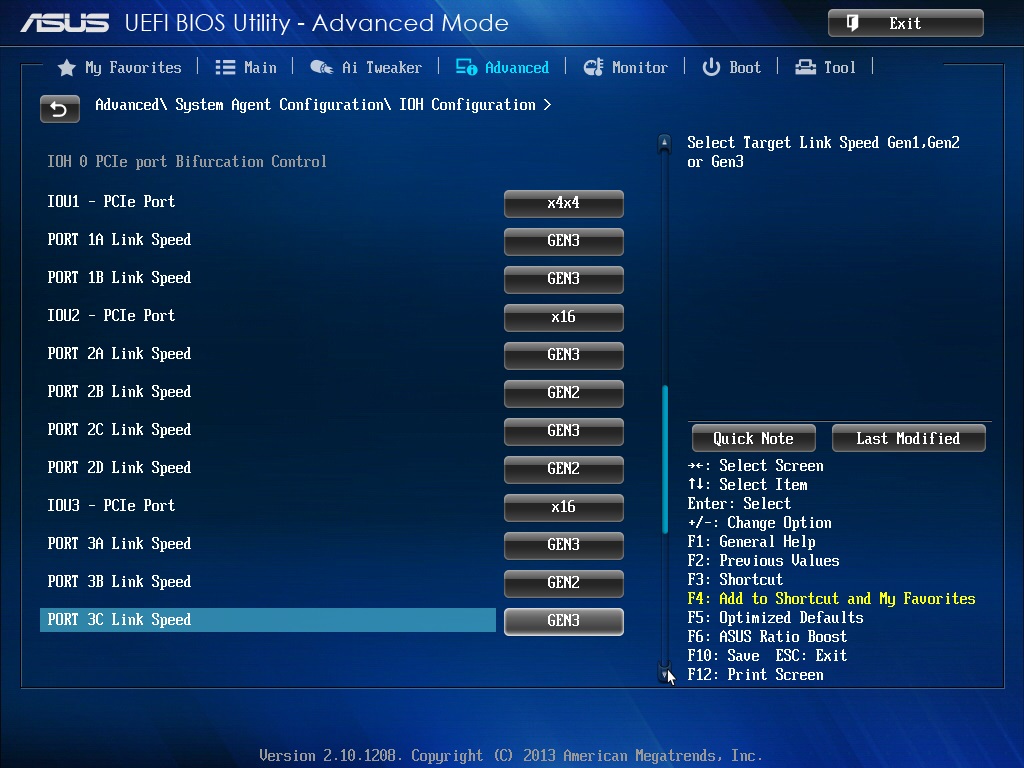
Note that in the last image, from the bitfurcation section of the IOH configuration seb-menu, that there is one port already set to bitfurcation by default: IOU1 which is Root Port 1, like on my E-WS board this is the ×8 Port from the CPU that is not furhter switched, different from root ports 2 and 3.
While on the E-WS Board, a PCIe ×8 Slot corresponds to Root Port 1, on this board its two ×4 ports.
Does this mean that bitfurcation is no "new" option which is just possiible on newer CPUs and MBs, its more a description for the procedure of splicing port resources in general?
The difference to the newer CPUs and chipsets is merely that they can do that automatically?
So these bitfurcation settings have been in use on PCI-Express from the beginning, but are hidden in setup after the integration of the MB features is completed.
So what we are trying to do here is not like exploring hidden "new" features but its more like configuring every function that is bios-related manually, like on pre-pnp systems, like in the 386 and 486 age?
Interesting!
Its more like enabling an inherent feature, where consumer systems are based on the same platform (x79 consumer is corporate C600 chipset) for example https://www.supermicro.com/products/moth…600/X9SRL-F.cfm
Which has these bios options:
http://www.supermicro.ru/files/manuals/MNL-1337.pdf
If you search for it you should find:
2
3
4
5
IOU1-PCIe Port
This feature allows the user to set the PCI-Exp bus speed between IOU1 and
PCIe port. The options are x4x4 and x8.
Adding those features for us consumers would mean more cost to support them since you will be delving into low level hardware configuration where just like in the good old days where half the time stuff doesnt just work.
My 2 cents tho is give us all the features and put them in a menu called Developer Features and hide it behind an unlock code or w/e.
OK, I understand what you mean.
I have a Z9PE-D8 WS Board also now.
This runs on a C600 or 602 chipset (which is almost or practically identical to X79, as you already mentioned. The vendors were just instructed by intel to relabel the chipset identification from C600 to X79 in the firmware and disable some features or so?)and I would expect this to be a product for the corporate market.
But I did not discover an unlocked bitfurcation feature in the bios settings yet.
I understand that they (Intel, Asus, whoever) have changed their opinion now to make the “enthusiast platforms” more attractive for enthusiats by unlocking this feature. Officially it’s available on i-X299 and AMDX399 Chipset systems, I think? And the respective corporate versions.
The idea of a Developers Features region in bios would be one I’d support.
After all, not only MB manufacturers, but also Intel provide tools and information for overclocking. Which is also under exclusion of warranties. So could they do with low level HW config options also.
@paranoid_android - Good to hear all is proper with last edit, thanks. Yes, it’s not new, only some board have it, some don’t, and them some hide it from users for some reason? And yes, all settings you see set as “Default” when you loaded defaults, are what was previously applied and in-use.
So now, for my sanity, can you please zip both proper BIOS for both models together into one zip and upload for me, so I can edit it into my last post with BIOS links, and then I’ll remove all previous links that way anyone looking for BIOS here in the future gets only the correct final edits.
On modern boards this is done within the ME region of the BIOS in a majority of cases, at least for the CPU lanes, unsure if PCH lanes are controlled there always too or not. I haven’t looked into it much, but I do know there is many lane controls in the ME settings.
I’ve already looked at your Z9 BIOS, we can make the same edits there in similar way.
@Lost_N_BIOS , Ok, I can pack the two files I’m using together and upload them.
But notice that I haven’t tried out your version of the E-WS Bios yet as the one I got from @JackSted proved to work.
If you want me to test that out too, than I can do that, but it may take some time.
So what I’d be ready to upload at this time are the files for
- P9X79-WS, nvme+bitfurcation mod based on stock bios 4091, file ceation date 2019-01-11 19:23 (7:23pm) [Lost_N_BIOS]
- P9X79E-WS, nvme+bitfurcation mod based on stock bios 1704, file creation date 2019-01-09 21:51 (9:51pm) [JackSted]
I dont’t know how the dates are displayed on your systems, or if the time is even changed do to time zone settings. But these are the dates that I can identify the files by.
Slightly OT:
Have added another interesting two images of the same sections from both bioses:
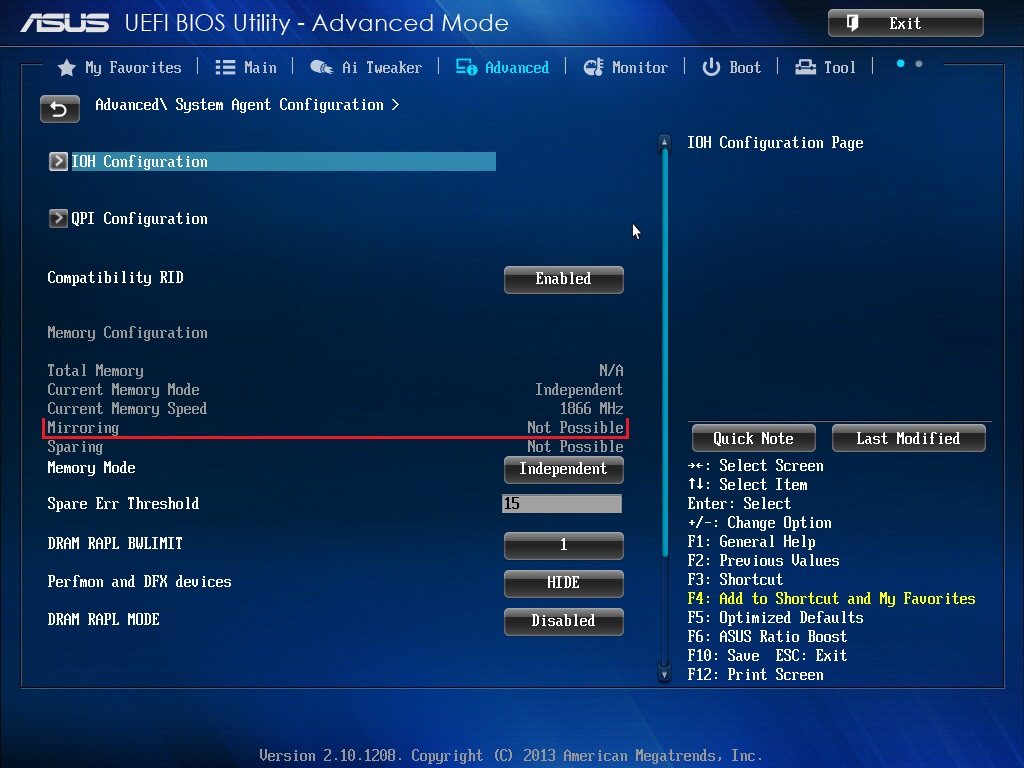
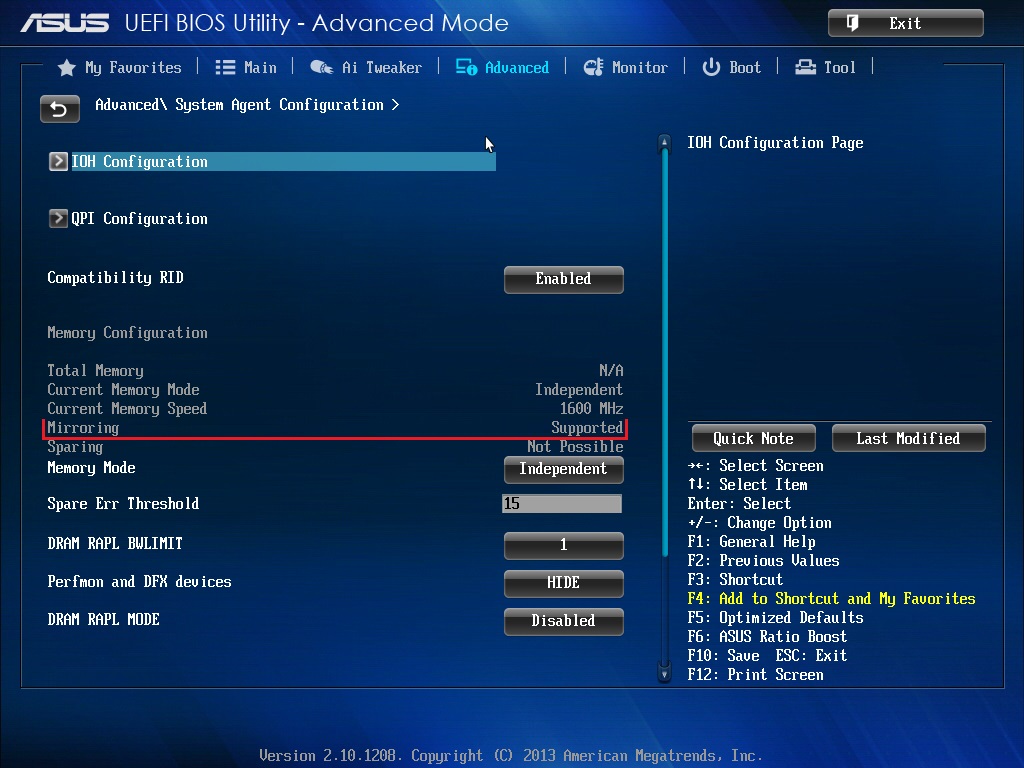
The I7-49xx Series [used on the E-WS] does not seem to support mirroring, while the Xeon E5v2 [used on the Non-E-WS] does.
I don’t know if that had been displayed on screen by the stock bioses, too. I just descovered it recently.
Not that I’d want to use half of my ram for a bit more reliability…
@paranoid_android - OK, yes, send those files, I’ll repackage and edit the previoud links (w/ P9X79E-WS - Fix’d by JackSted since he did that one while I was out, swapped the displayed menus for us)
I have all the BIOS here, just too many and even if I went by latest date/time I’m still not sure  Interesting find there on the memory, must be due to the CPU’s, since both board display that information notification.
Interesting find there on the memory, must be due to the CPU’s, since both board display that information notification.